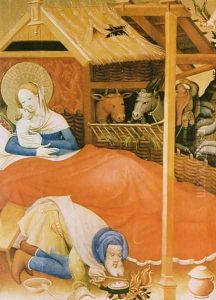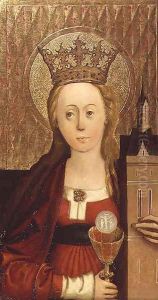Conrad von Soest Paintings
Conrad von Soest, also known as Conrad von Soest, was a pivotal figure in the transition from Gothic to Renaissance art in Northern Europe. Born around 1370 in Dortmund, which was then part of the Holy Roman Empire, Conrad's early life is shrouded in mystery, including his training and initial influences. Despite the lack of detailed records about his early years, it is evident from his mature work that he was well acquainted with the International Gothic style, which combined elements of French, Italian, and local German artistic traditions.
Conrad von Soest is best known for his work as a painter, particularly in the medium of panel painting, a technique that became increasingly popular during his lifetime. His most famous work, the 'Niederwildungen Altarpiece' (1403), showcases his skill in depicting religious narratives with emotional depth and technical precision. This altarpiece, created for the church of St. Mary in Bad Wildungen, illustrates scenes from the life of the Virgin Mary and the Passion of Christ, characterized by vivid colors, intricate details, and a sense of depth and realism that was innovative for its time.
Beyond his contributions to panel painting, Conrad was also a recognized master of the Westphalian school of painting, and he played a significant role in the development of the altarpiece as a form of religious art in Northern Europe. His style, which reflected the influence of the International Gothic but also anticipates elements of the early Renaissance, was characterized by a heightened attention to human emotion, detailed landscapes, and the use of light and shadow to create a sense of three-dimensionality.
Conrad von Soest's influence extended beyond his immediate geographical area, impacting the development of Northern Renaissance art. While the precise date of his death is unknown, it is generally believed he died around 1422 in Dortmund. Despite the limited number of surviving works definitively attributed to him, his legacy as a bridge between the Gothic and early Renaissance periods in Northern European art is undisputed. Through his innovative techniques and expressive storytelling, Conrad von Soest remains a significant figure in the history of art, marking the transition towards a more naturalistic and human-centered approach in the depiction of religious themes.


